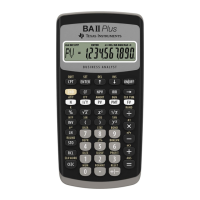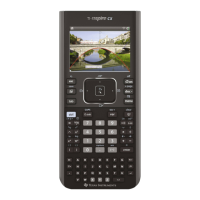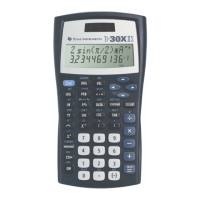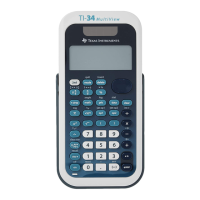TI-89 / TI-92 Plus / Voyage™ 200 PLT Statistics with List Editor App Getting Started 3
Stats/List Editor CATALOG
Accessing the Flash Apps CATALOG
Most statistical capabilities provided by the Stats/List Editor Application are also
available for use from the Home screen and in programming.
Copy any function or instruction from the
CATALOG (including the Flash Apps CATALOG)
and paste it into the entry line on the previous screen.
1. To access the
Flash Apps CATALOG, press:
¦ ½ … (
Flash Apps) for the TIL89
¦ 2 ½ … (
Flash Apps) for the TI-92 Plus / Voyage™ 200 PLT
The
CATALOG with all Flash Apps functions is displayed.
2. Use the up and down arrow keys (C D) to move the cursor (ú) to the Stats/List
Editor function that you want to use.
3. Press ¸ to paste the function or instruction to the entry line of previous
screenlist editor, Home screen, program, etc.
Tip: To find an item in the CATALOG quickly, press the first letter in the item name. (You do not have
to press j first.) The cursor (ú) moves to the first item that begins with that letter. Use C and D to
scroll the CATALOG until you find the item you are looking for.
Understanding the CATALOG Screen
To resolve duplicate name conflicts from other applications, the application name is
combined with the function name. When viewed in the
Flash Apps CATALOG, the
application name follows the function name
binomCdf(...TIStat. When placed in the entry
line, the application name precedes the function name
TIStat.binomCdf(.
Flash Apps CATALOG with binomCdf( selected
List editor with binomCdf( pasted to entry line
Syntax
In the CATALOG, each function’s syntax (all arguments and punctuation needed to
execute the function) is included in the status line to help enter you enter the correct
arguments for the function. This is especially useful for programming.
Tip: Press ƒ (Help) from the CATALOG to view the selected syntax statement at a larger size.
Example: binomCdf
N,P[,LOW,UP]
Notes: Always separate arguments with commas. Arguments in brackets are optional.
Function name (binomCdf)
with application prefix
(TIStat). Enter arguments
here.
Status line containing
syntax for binomCdf
Function name
(binomCdf) with
application (TIStat)
identified
Status line containing
syntax for binomCdf
N = Number of trials
P = Probability of success
LOW = Lower limit
UP = Upper limit

